Finding new ways to cook your favorite recipes and meals can sometimes be challenging. For example, do you need ground corn for something you're making but don't have a grinder? Is it possible to use something else to give your corn the same effect?
Luckily, we've done plenty of research and have the answer below!
If you don't have a grinder but need ground corn, we recommend grabbing a mortar and pestle. Since the dawn of humanity, corn has been ground using this method, so who's to say you can't skip the technology and put in some arm work?
Like making fresh guacamole, you'll need to pound the kernels into a powder or paste, which you can use for your cooking.
As we start this post, we will discuss all things grinding corn and teach you how to do this without a traditional grinder. Whether your appliance is broken, you haven't ground corn before, or you need other tips and tricks: we're here to help. With that said, let's dive right into this topic!
How Can You Grind Corn Without A Grinder?
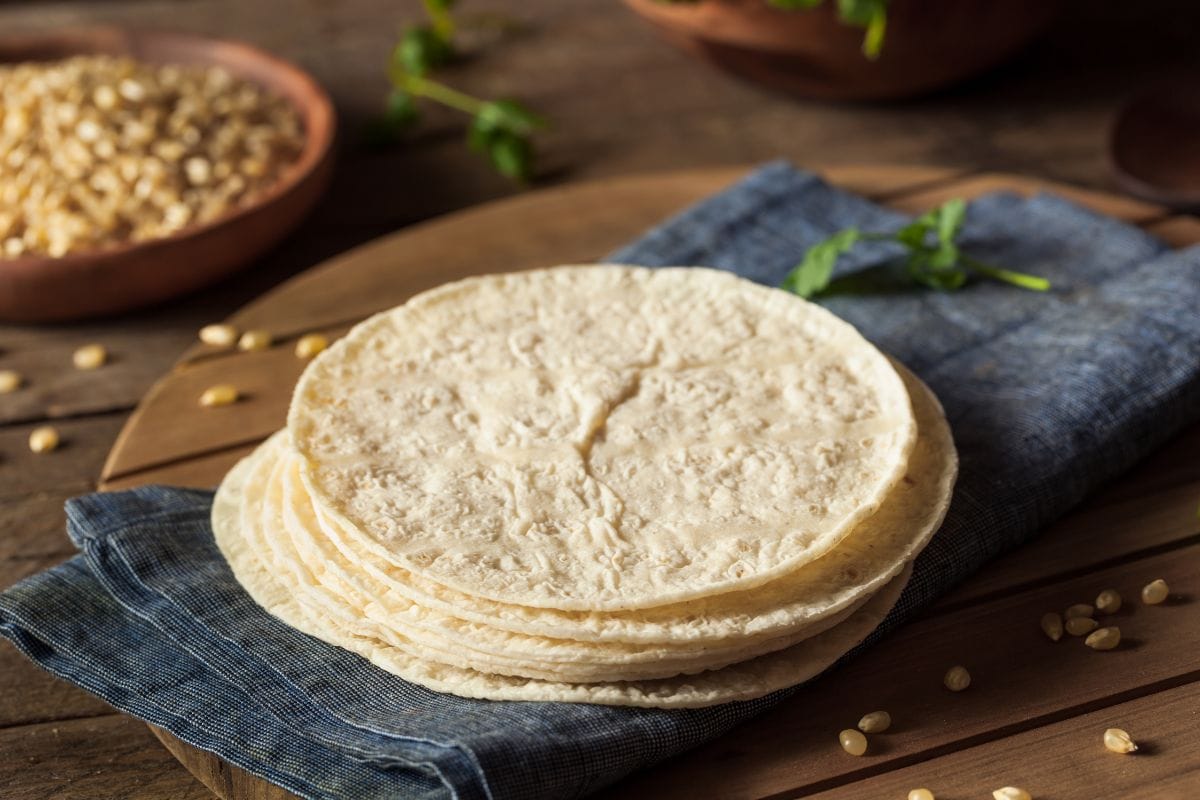
If you need ground corn for a recipe but don't have a grinder, this process shouldn't take more than a mortar, pestle, and some beating. Generally, you can smash down your corn kernels with your pestle, creating a paste or powder.
Of course, this is how people back in pre-technology times ground corn, so let's take a step back in history. According to NCpedia, Native Americans developed the practice of grinding corn using a mortar and pestle.
That is how they make their corn dishes without a fancy food processor or blender. All you need to do is mash down the corn with your tools until it becomes a paste or powdery substance.
Depending on the type of corn you have (cooked from cob or kernels), this might become easier or more difficult. For example, kernels are more complex to mash than cooked pieces from a cob.
Therefore, if you want to make this easier, we recommend cooking your corn cobs before grinding them. The same goes for an automatic grinder, as kernels can break it.
What Do You Use Ground Corn For?
Ground corn, or cornmeal, is a popular ingredient in many recipes. Most commonly, you need ground corn for making cornbread, although it works in dishes like pizza, soups, and even chili.
Ground corn is perfect for texturizing baked goods, which is why not having a grinder can be frustrating. Luckily, with a mortar and pestle, you should be able to produce the same result for your food.
According to the Oryana Community Co-op, ground corn is an important thickener for various recipes. Since kernels make a powder, that can work to thicken a soup, chili, or even baked items.
Therefore, the corn in your kitchen is good for much more than butter and strong teeth. You also want to remember that corn is very healthy and has been used for cooking and baking since the beginning of time.
So, technology or not, you have a lot to do with the corn in your home or garden.
ChefSofi Mortar And Pestle Set
This mortar and pestle set is unpolished heavy granite, has an anti-scratch design, has a two-cup capacity, is an excellent alternative to traditional grinders, and comes with a satisfaction guarantee.
Follow this link to view it on Amazon.
Can I Grind Corn In A Blender?
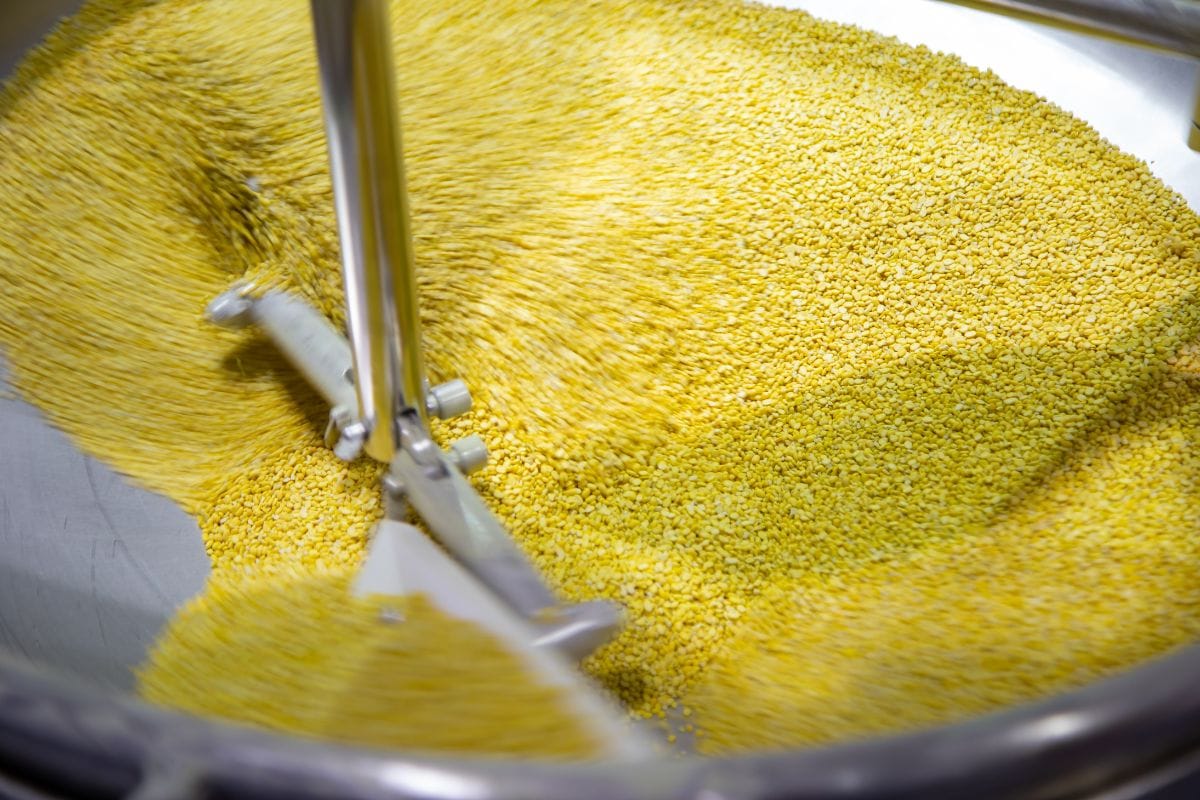
As long as your blender is durable, it should be okay to use for grinding corn. Since corn can be ground in two ways (cooked or kernels), you want to see what your appliance can handle.
As we mentioned before, corn kernels are hard and can break the mechanisms inside your blender. Therefore, it's usually better to grind cooked corn and turn it into more of a paste.
The last thing you want to do is try and skip the grinder only to break your blender too. The best policy is to read the manual with your blender/appliance and see if grinding kernels is possible.
With your mortar and pestle, you'll be able to pound the kernels into dust/powder, all without worrying about breaking anything. That's why we recommend that method over trying different processors or appliances.
Of course, you might get away with doing this if you have a Blendtec or Vitamix blender since they're built to handle harder foods.
Again, it's best to repair your food grinder rather than risk it with your other devices. Many experts also suggest covering the blades of your blender for corn and only making up to 2-3 cups at a time.
How Do You Make Fresh Cornmeal?
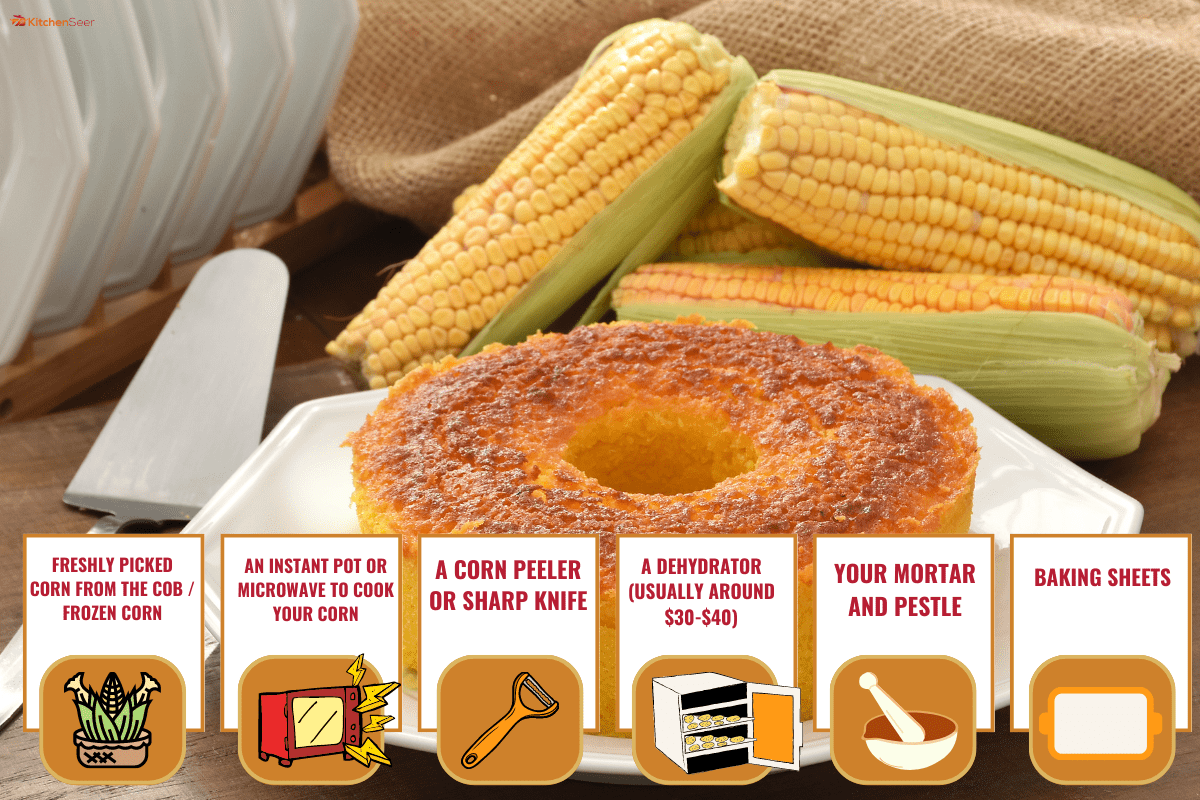
This is pretty simple if you need the instructions for making homemade cornmeal. First, you need to gather all of the required ingredients and items:
- Freshly picked corn from the cob / frozen corn
- An instant pot or microwave to cook your corn
- A corn peeler or sharp knife
- A dehydrator (usually around $30-$40)
- Your mortar and pestle
- Baking sheets
Once you have everything you need, start the cooking process.
- Soak your corn in water for around 15-20 minutes.
- Clean the ears of corn, cutting off the thick stem at the end.
- Cook your corn using your preferred method.
- Remove the skin from your corn, catching the kernels.
- Once your kernels are off, spread them onto a lined tray in your dehydrator.
- Set the dehydrator to 125-135 degrees Fahrenheit.
- Allow the corn to dry for 8-12 hours.
- Add your dried corn into the mortar.
- Grind the corn with the pestle until it forms a powder.
- Cover your cornmeal in an airtight container, or use it for cooking right away!
So, you can see that making fresh cornmeal isn't too tricky without a grinder. Remember, if the Natives could do it using their mortar and pestle for years, you should be able to adapt for your corn recipe.
Furthermore, you can also try blending the corn once it is dry, although this can get messier than a mixing bowl. We also suggest using your cornmeal sooner than later, considering it will be the best within the first day or two.
Can I Use An Electric Coffee Mill To Grind Corn?
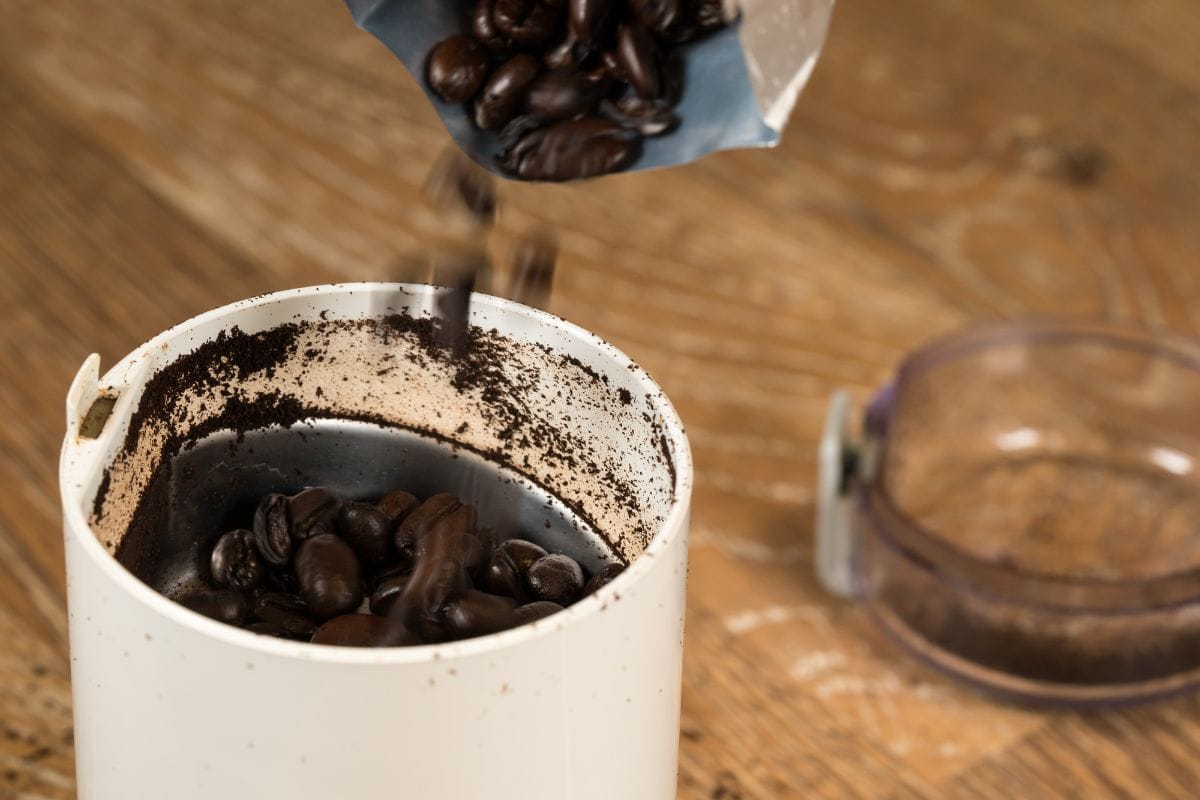
Yes! If you have an electric coffee mill, you want to use for grinding corn; this should work fine. Generally, a coffee mill works closely with a traditional grinder, making it a good backup.
Your electric coffee mill breaks up crunchy coffee beans, turning them into a finer power for brewing coffee. According to experts, your electric coffee mill should work for corn because of its propeller-shaped stainless-steel blades revolving at very high speeds.
That said, you want to double-check the instructions with your machine and make sure it can handle harder beans and kernels. As we noted above, if making cornmeal, you need to dry them out after cooking them.
So, the corn shouldn't necessarily be "hard," but it will be crunchy. We don't recommend putting kernels you haven't cooked or prepared into any of your appliances since this can be risky.
The best policy here is to do a test run in your coffee mill and see how it responds.
Is It Better To Manually Grind Corn?
When it comes to manually grinding corn being better than using a grinder, this depends. For example, what are you using the corn for? Do you have someone working with you who can't use a mortar and pestle?
Since the mortar and pestle method requires a bit of beating, that isn't always ideal for those with arthritis and other joint-related conditions.
Therefore, you might prefer to use a machine to grind your corn if that's a concern. However, from a taste standpoint, you might prefer the chunkiness of hand-ground cornmeal, although this can be different for everyone.
One thing to remember is that using food processors can sometimes give your corn an overly smushy taste and feel. The same goes for powder: overly crushed corn kernels can be too fine.
In that situation, we'd recommend switching to a manual mortar and pestle method. Sometimes, doing the grinding on your own is the best way.
Especially if you're cooking with friends or family, grinding your corn in a bowl can be a fun learning experience over throwing it into a machine and hitting the power button.
What Does Ground Corn Taste Like? Is It The Same As Flour?
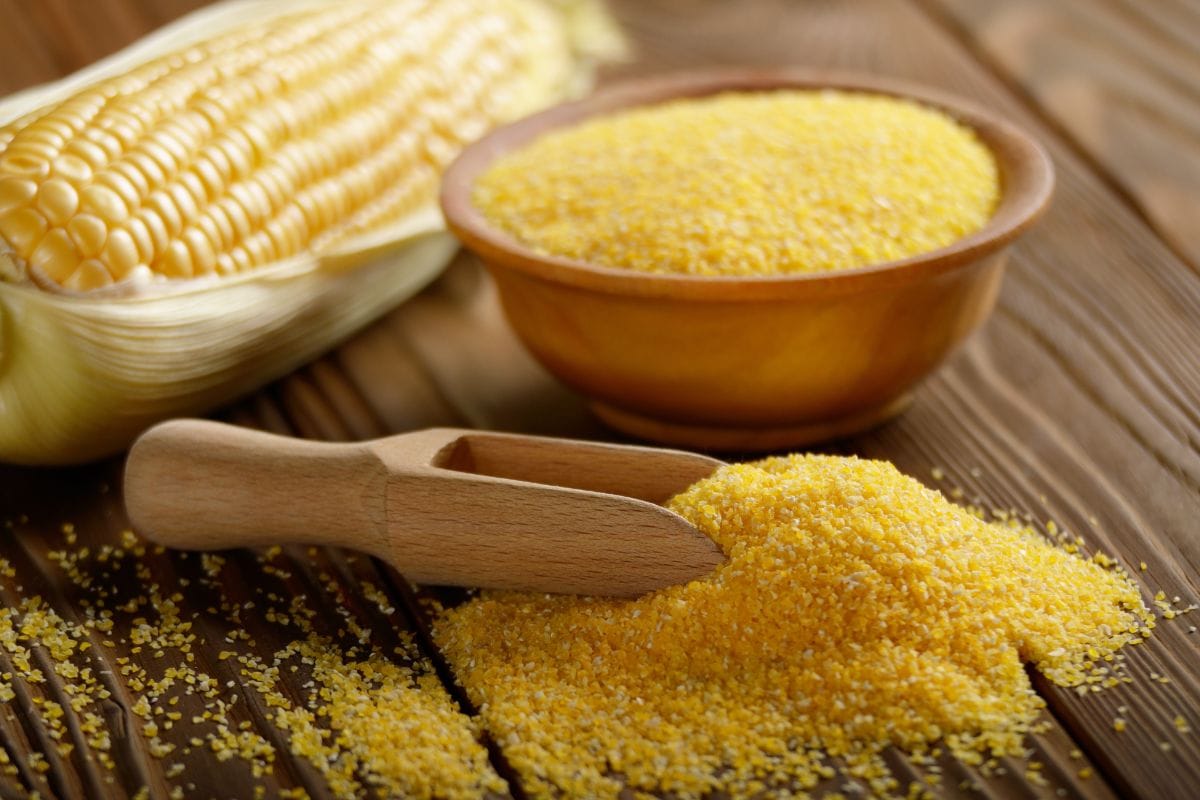
For those needing a taste reference for their ground corn, expect it to be pretty bland. Generally, the type of corn you use to grind will impact its final taste and texture.
For example, sweet corn is perfect for making cornbread, as it adds to the already delicious flavor. If you use unsweetened corn for grinding, it's likely to taste very plain and be more of a flour alternative for your baking or cooking.
Since cornmeal and flour are made from whole dried corn kernels, they share some traits. However, cornmeal is a bit chunkier, and flour should be finer.
To Wrap It Up
Whether your grinder is broken or you don't have one, you've likely tried making ground corn to no avail. Luckily, if you use a mortar and pestle, you should be able to get the same effect.
We found that this long-used grinding method is perfect for making cornmeal and shouldn't take more than a few minutes. You can also try blending corn or putting it into a coffee mill, which should have a similar effect to the traditional grinder.
Again, we recommend cooking your corn before throwing it into any machinery, as it can damage the components.
And while we have your attention, check out these helpful articles below!
Can You Cook Microwave Popcorn In An Air Fryer? [Here's What You Need To Know]
How To Keep Corn From Turning Brown When Canning
Meat Grinder Keeps Clogging – Why And How To Fix It?


![Granite mortar and pestle with spices ready for grinding, Are Granite Mortar And Pestles Safe? [And How To Use]](https://kitchenseer.com/wp-content/uploads/2022/09/Granite-mortar-and-pestle-with-spices-ready-for-grinding-250x250.jpg)
![Fresh herbs inside a wooden mortar and pestle bowl on a wooden plank table with knotholes and nails. The herbs have multiple colors and textures. The bowl has a swirl pattern and is surrounded by piles of additional fresh herbs. - How To Season A Wooden Mortar And Pestle [Inc. Maintenance Care]](https://kitchenseer.com/wp-content/uploads/2022/09/FRESH-1-250x250.jpg)

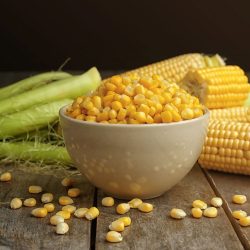


Oh MY, it looks great! Can’t wait to cook em this Sunday!